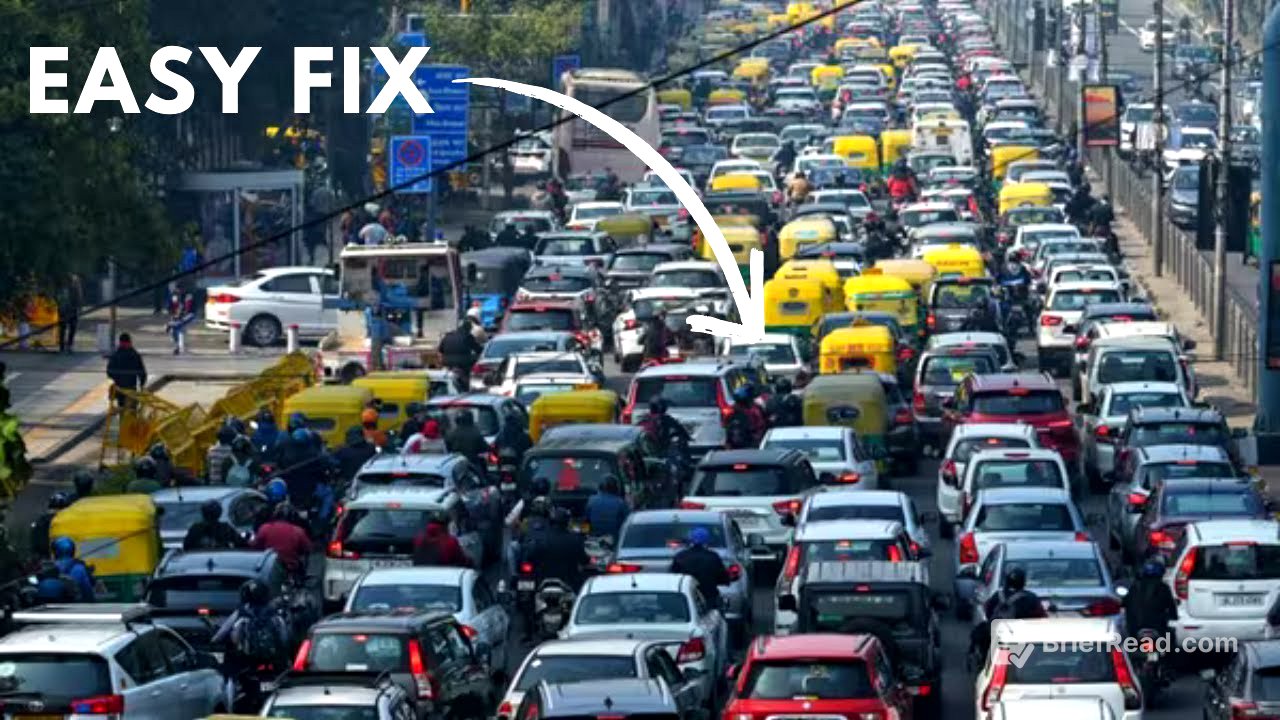TLDR;
This video talks about how Indian cities are facing traffic congestion due to over-reliance on private cars and how they can learn from the example of Boot, a city that transformed its transportation system by prioritizing public transport and pedestrian infrastructure. The key takeaways are:
- Focusing on car-centric infrastructure worsens traffic due to induced demand.
- Prioritizing public transport, cycling, and pedestrian infrastructure is more efficient and economical.
- Disciplined planning and strong leadership are essential for successful urban transformation.
The Problem with Car-Centric Planning [0:43]
The video highlights that Indian cities like Delhi, Bengaluru, and Mumbai are struggling with traffic congestion because of the increasing number of private cars. The presenter points out that if even half the population of a city like Mumbai owns a car, the city's infrastructure would collapse. Investing in flyovers and wider roads only attracts more cars, a phenomenon known as induced demand. Cars require significantly more space per person compared to pedestrians and cyclists, making public transport a more efficient solution.
Boot's Transformation: Prioritizing People Over Cars [1:53]
The video then talks about Boot, which faced similar traffic problems in the 1990s. Mayor Enrich Penelosa implemented radical changes, prioritizing people over cars. Boot launched the Trans Milano bus rapid transit system, which moves 2.4 million people daily at 27 km/hour. This system is faster and cheaper than private vehicles.
Why Indian Cities Struggle to Replicate Boot's Success [2:42]
The video explains that Indian cities often fail to replicate Boot's success due to fragmented planning. Unlike Boot, Indian cities allow buses to compete with cars, pedestrians struggle with traffic, and cyclists navigate congested roads. For example, Bengaluru spent crores on expanding roads, but the average commute speed decreased.
Lessons Indian Cities Can Learn from Boot [3:16]
The video suggests that Indian cities can learn from Boot's disciplined planning. Boot clearly defined road hierarchies, with dedicated lanes for buses, protected tracks for cycles, and safe sidewalks for pedestrians. Cars were deprioritized, making public transport safer and faster. To achieve similar results, India must prioritize public transport infrastructure over car-centric infrastructure, create wider sidewalks, reduce car lanes, and prioritize pedestrian zones.
The Economic and Environmental Benefits of Public Transport [4:00]
The video emphasizes that focusing on public transport is not just about convenience but also about smart economics. Investing in buses and pedestrian infrastructure benefits far more people than investing in car-centric projects. Reducing car dependency also significantly reduces air pollution, saving billions in healthcare costs. The Delhi Metro, for example, removes 390,000 vehicles daily, cutting down 630,000 tons of pollution annually. The video concludes by saying that change is possible with intentional planning and strong leadership, and that cities are built by choices, so we should choose wisely. The video clarifies that it is not against car ownership but advocates for smarter, more efficient ways to move around cities, making them better for everyone.









